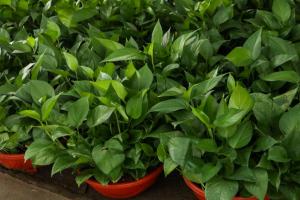How to Propagate an Ivy Plant
Ivy plants are popular indoor and outdoor plants known for their lush foliage and ability to climb walls and structures. However, if you want to expand your plant collection or share ivies with friends and family, propagation is the way to go. Here is a step-by-step guide on how to propagate an ivy plant.
Materials:
- A healthy ivy plant
- A pair of scissors or pruning shears
- Potting mix
- Small pots or containers
- Water
- A plastic bag or plastic wrap
Step 1: Choose the Plant and the Time
Choose a healthy ivy plant that you would like to propagate. Spring and summer are the best times to propagate ivy plants since they are actively growing during this time.
Step 2: Take Cuttings
Using your scissors or pruning shears, take several cuttings from the ivy plant. Look for a stem that has green growth and cut a section that contains at least three to four leaves. You should make the cut just below the node where a leaf is attached. Remove the lower leaves along the cutting, leaving only two or three leaves at the top.
Step 3: Prepare the Pots and the Potting Mix
Fill the small pots or containers with a moistened potting mix. The potting mix should be well-draining and contain perlite or vermiculite to help with drainage. Make sure the pots have drainage holes at the bottom.
Step 4: Plant the Cuttings
Take the cuttings and plant them in the pots. Make a hole in the center of the potting mix and insert the stem of the cutting. Firmly press the potting mix around the stem to help it stay in place.
Step 5: Water the Cuttings
Water the cuttings thoroughly, making sure the potting mix is moist but not soggy. Water again only when the potting mix starts to feel dry. Always check the soil moisture before watering.
Step 6: Cover the Cuttings
Cover the pots with a plastic bag or plastic wrap to create a humid environment for the cuttings. This will help prevent moisture loss and encourage rooting. Make sure the plastic is not touching the leaves of the cutting.
Step 7: Place the Cuttings in a Bright Spot
Place the covered pots in a bright spot but away from direct sunlight. Keep the pots at a temperature of around 65 to 75 degrees Fahrenheit (18 to 24 degrees Celsius).
Step 8: Watch for Growth
Within a few weeks, you should start to see new growth on the cuttings. This is a sign that they have rooted and are ready to be transplanted into larger pots.
Step 9: Transplant the Cuttings
Once the cuttings have grown roots, you can transplant them into larger pots filled with fresh potting mix. Water the new plants and place them in a bright, indirect light location. You can now enjoy your new ivy plants!
In conclusion, propagating an ivy plant is a simple process that can be done using cuttings. By following the steps outlined above, you can grow your collection of ivy plants and share them with others. Remember to be patient and attentive to the needs of your new cuttings, and you'll soon have a thriving garden full of beautiful ivies.

 how many times do yo...
how many times do yo... how many planted tre...
how many planted tre... how many pine trees ...
how many pine trees ... how many pecan trees...
how many pecan trees... how many plants comp...
how many plants comp... how many plants can ...
how many plants can ... how many plants and ...
how many plants and ... how many pepper plan...
how many pepper plan...






























